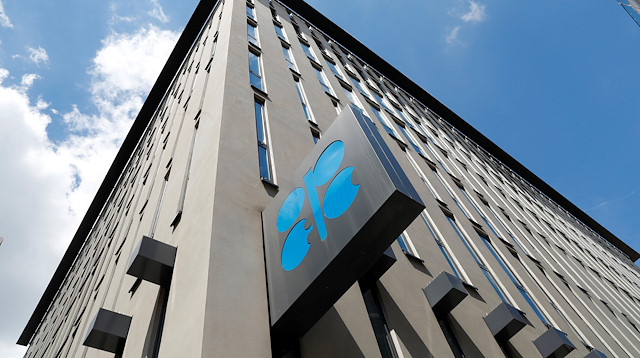
OPEC and its allies are working towards a deal this week to reduce oil output by at least 1.3 million barrels per day, four sources said, adding that Russia's resistance to a major cut was so far the main stumbling block.
OPEC meets on Thursday in Vienna, followed by talks with allies such as Russia on Friday, amid a drop in crude prices caused by global economic weakness and fears of an oil glut due largely to a rise in U.S. production.
The producer group's de facto leader, Saudi Arabia, has indicated a need for steep reductions in output from January but has come under pressure from U.S. President Donald Trump to help support the world economy with lower oil prices.
Possibly complicating any OPEC decision is the crisis around the killing of journalist Jamal Khashoggi at the Saudi consulate in Istanbul in October. Trump has backed Saudi Crown Prince Mohammed bin Salman despite calls from many U.S. politicians to impose stiff sanctions on Riyadh.
The sources, three from the Organization of the Petroleum Exporting Countries and one from a non-OPEC producer, said the meetings were taking place in a difficult environment and that Russia's position would be key in reaching a deal.
"Russia is playing tough," one of the OPEC sources said.
Another OPEC source said: "The Saudis are working hard on the cut. But if Russia says no cut, then we (OPEC) won’t cut."
Russian sources have indicated the country could contribute some 140,000 bpd to a reduction, but Middle East-dominated OPEC insists Moscow cut by 250,000-300,000 bpd.
Two sources said talks were focusing on a pro-rata cut of 3-3.5 percent from October output levels, with no exemptions for any member.
Sources also said OPEC could delay a decision to cut if the main criteria such as Russia's involvement were not met, even though doing so would mean a further fall in prices.
"OPEC can always meet again in February, for example, and decide on a cut then. Those who were not able or willing to cooperate will be wanting to cut then," one source said.
Saudi Arabia previously insisted on a need to reduce production.
It was unclear whether the apparent shift in position was caused by OPEC using negotiation tactics to bring Russia on board or by pressure from Trump to refrain from cutting output.
In October 2018, OPEC pumped 32.916 million bpd, while its non-OPEC allies pumped 18.252 million bpd, according to the group’s internal data.
The non-OPEC source said a deal could still be done this week, though details remained unclear: "The Saudis and Russians have an agreement to cut. They are just working on the final details on the volumes and mechanisms."
Brent oil prices rose more than 2 percent on Tuesday, boosted by expectations OPEC would reduce output.



